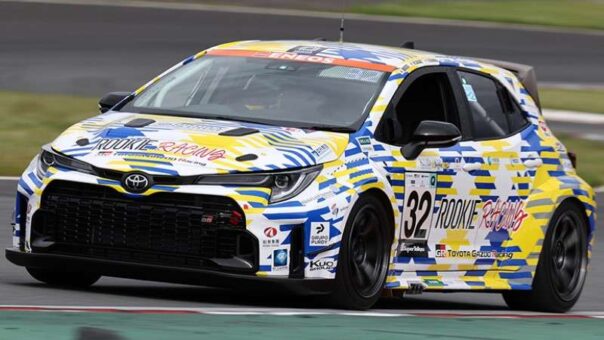Toyota Motor Corporation (Toyota) is set to make history by entering the ENEOS Super Taikyu Series 2023 Round 2 NAPAC Fuji SUPER TEC 24 Hours Race with their hydrogen-powered #32 ORC ROOKIE GR Corolla H2 Concept running on liquid hydrogen.
This event marks the world’s first race featuring a vehicle powered by liquid hydrogen fuel. Initially, the liquid hydrogen-powered Corolla was scheduled to debut at the Round 1 Suzuka Super Taikyu 5 Hours Race; however, a vehicle fire during a private test run at Fuji International Speedway in March forced Toyota to withdraw from the race.
Emphasizing safety as their top priority, Toyota has spent the past two months implementing crucial modifications to the hydrogen piping system responsible for the vehicle fire. These safety improvements include relocating the hydrogen piping away from high-temperature areas and installing safety covers on the hydrogen piping joints. These measures aim to prevent loosening and effectively direct any potential leaks to detectors.
In addition to enhancing safety, Toyota has also achieved a significant weight reduction of over 50 kg over the past two months. This weight reduction has propelled the liquid hydrogen-powered Corolla to surpass the lap times achieved by its gaseous hydrogen-powered predecessor during its debut in May 2021.
Toyota credits their continuous development and improvements, as well as the support from their partners, for enabling their entry into the highly anticipated Fuji 24 Hours Race. A notable portion of the liquid hydrogen used in the Corolla is derived from lignite and was produced and transported from Australia in February 2022 through the Suiso Frontier liquid hydrogen carrier, developed by Kawasaki Heavy Industries, Ltd. (KHI), as part of the HySTRA project.
READ MORE: Lexus to unveil all-new GX on June 08, 2023
To facilitate the use of liquid hydrogen as fuel, Toyota has collaborated with Iwatani Corporation to develop a mobile liquid hydrogen station specifically designed for the race circuit. Utilizing liquid hydrogen eliminates the need for equipment such as compressors and pre-coolers, resulting in a 75% reduction in the required station installation area compared to gaseous hydrogen stations. Fueling can now be conveniently performed in the pit area, similar to gasoline-powered vehicles, without the need for pressurization. This advancement allows for sequential refueling of multiple vehicles, improving efficiency.
While the fuel supply system has been modified to accommodate liquid hydrogen, the engine itself remains unchanged from when the vehicle operated on gaseous hydrogen. The increased energy density per volume achieved by using liquid hydrogen has effectively doubled the cruising range while maintaining the same filling time of approximately 1.5 minutes. Toyota aims to further enhance engine performance, increase the cruising range, and optimize filling time throughout the year.
However, the utilization of liquid hydrogen presents unique challenges due to its requirement for extremely low temperatures below -253℃ during filling and storage. Overcoming these challenges entails developing fuel pump technology suitable for low-temperature environments, preventing hydrogen evaporation from the tanks, and establishing regulations for vehicle-mounted hydrogen tanks. Toyota remains committed to collaborating with their partners in the production, transportation, and utilization of hydrogen to overcome these obstacles.
Recognizing the distinct advantages and challenges posed by both gaseous and liquid hydrogen, Toyota maintains their focus on the development of both fuel options. This strategic approach aims to increase fuel supply options and leverage the unique characteristics of gaseous and liquid hydrogen, ultimately driving innovation and progress in the hydrogen-powered vehicle industry.
READ MORE: Lexus teases all-new LBX ahead of June 5th debut in Milan
